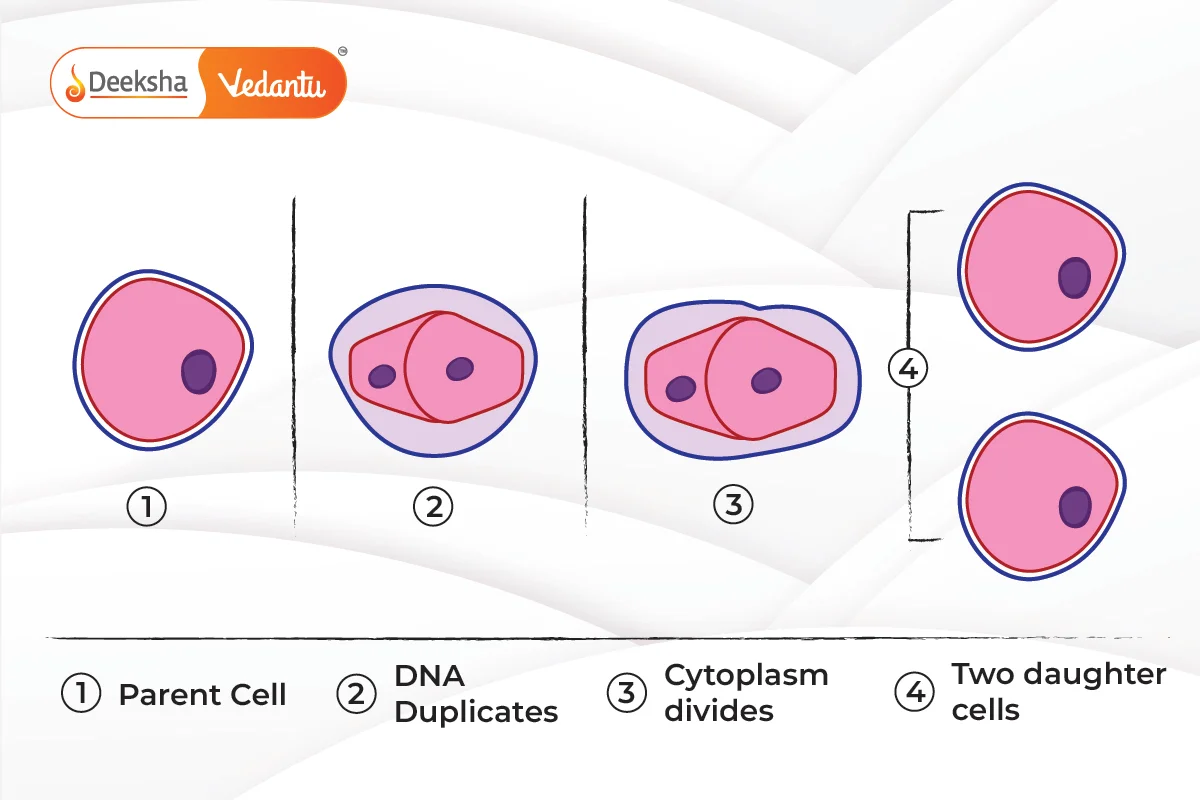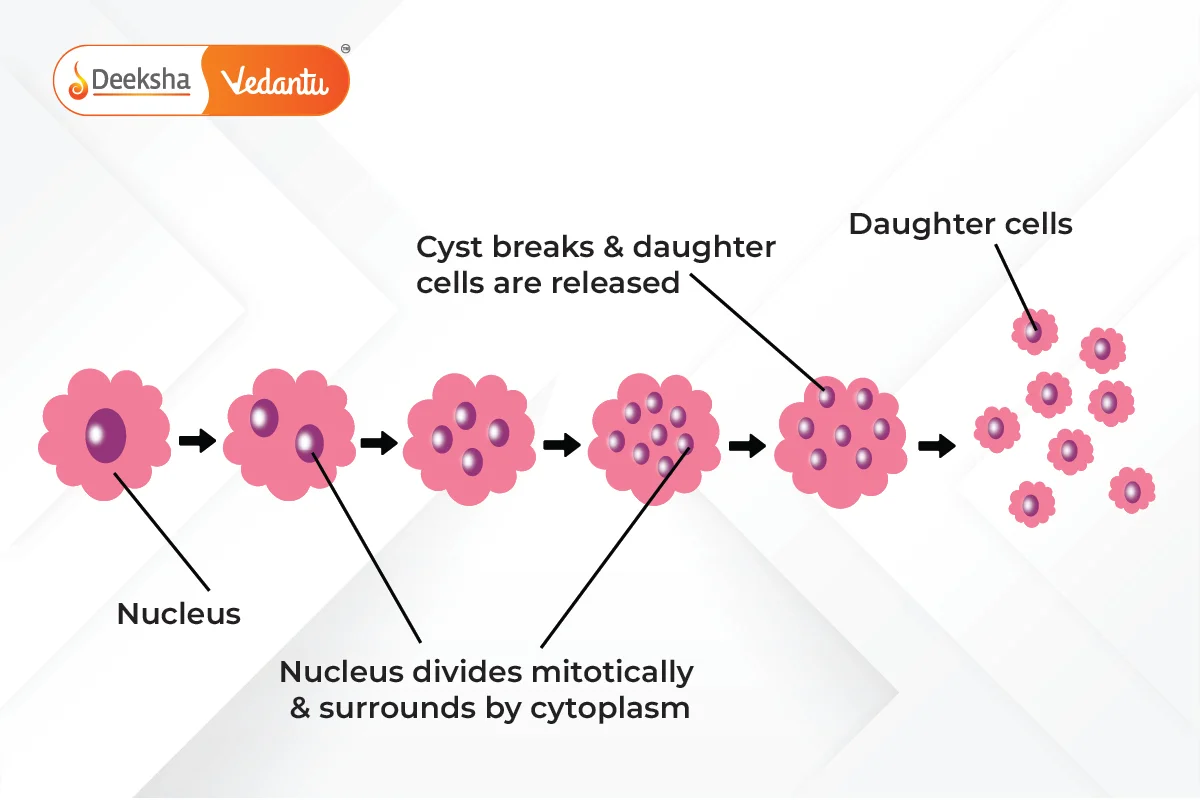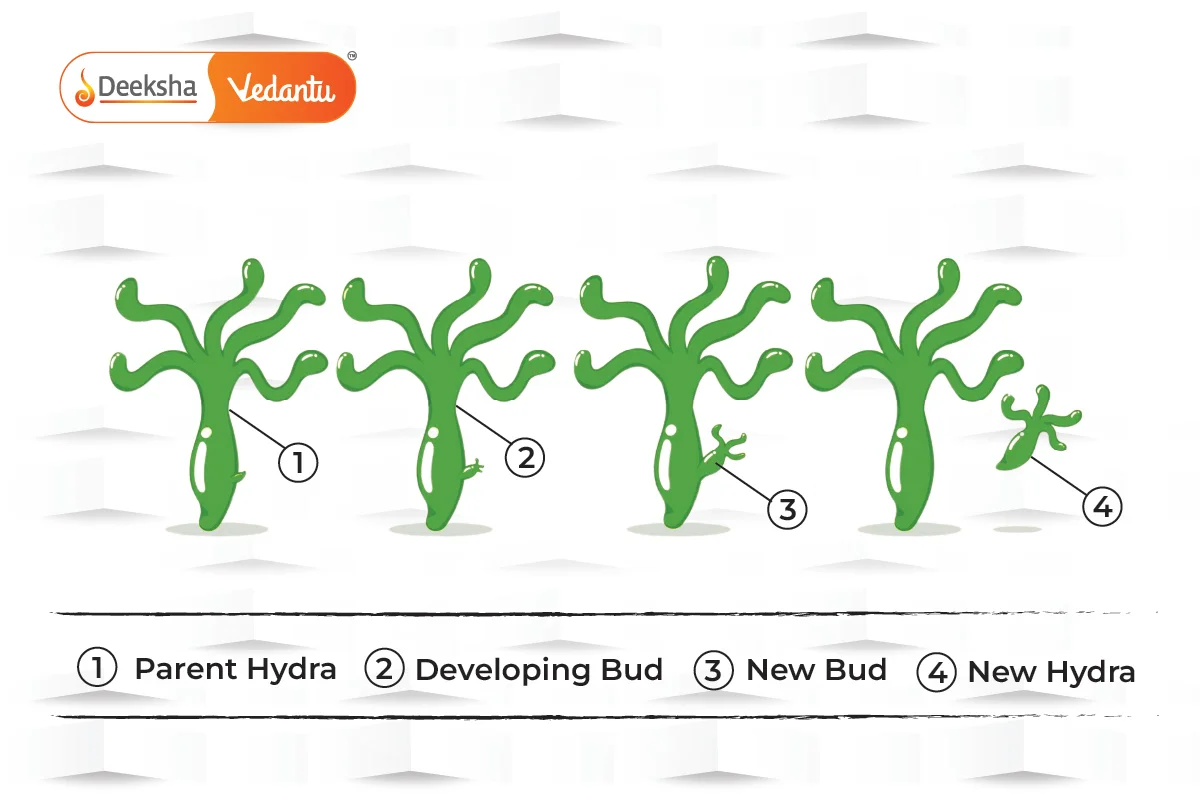Introduction
Single-celled organisms (unicellular organisms) such as bacteria, protozoa, and certain algae use specific modes of reproduction to create new individuals. Since they consist of just one cell, their reproduction methods are generally simpler compared to multicellular organisms. These organisms primarily rely on asexual reproduction, where only one parent is involved, and the offspring produced are usually identical to the parent.
Asexual Reproduction in Single-Celled Organisms
Asexual reproduction is the most common mode of reproduction among unicellular organisms. It allows for rapid population growth, as it does not require a mate and is a relatively simple process. In asexual reproduction, the parent cell divides to form new offspring, which are genetically identical to the parent. The primary modes of asexual reproduction in single-celled organisms include:
Binary Fission
Binary fission is the most common method of asexual reproduction in single-celled organisms. In this process, the parent organism divides into two equal and identical daughter cells, each with a copy of the parent’s genetic material.
Process:
- DNA Replication: The DNA of the organism is duplicated so that each daughter cell will receive a complete set of genetic information.
- Cell Division: The cytoplasm divides, and the parent cell splits into two daughter cells. Each daughter cell has identical genetic material as the parent cell.
Examples:
- Bacteria: Bacteria like Escherichia coli reproduce through binary fission, allowing them to multiply rapidly under favorable conditions.
- Amoeba: In Amoeba, the nucleus divides first, followed by the division of the cytoplasm, resulting in two identical daughter cells.

Multiple Fission
In some unicellular organisms, such as certain protozoa, reproduction occurs through multiple fission, where the parent cell divides into many daughter cells simultaneously.
Process:
- Nuclear Division: The nucleus undergoes multiple divisions, forming several nuclei inside the parent cell.
- Cytoplasmic Division: The cytoplasm then divides around each nucleus, producing multiple daughter cells in a single reproductive event.
Examples:
- Plasmodium: The parasite responsible for malaria, reproduces through multiple fission in its host’s body. This allows the parasite to spread rapidly.

Budding
Budding is another form of asexual reproduction seen in some unicellular organisms. In this process, a small bud or outgrowth forms on the parent organism. This bud gradually grows and, when fully developed, detaches from the parent to become a new individual.
Process:
- Bud Formation: A small bud forms as an outgrowth on the parent cell, typically due to localized cell division.
- Growth of the Bud: The bud enlarges and matures while still attached to the parent.
- Detachment: Once fully developed, the bud detaches to form an independent organism.
Examples:
- Yeast: Saccharomyces cerevisiae (brewer’s yeast) reproduces through budding, where a small bud forms and grows into a new cell.
- Hydra: Though Hydra is a multicellular organism, it reproduces by budding, with new individuals growing out from the parent’s body.

Spore Formation
Spore formation is another mode of asexual reproduction used by some single-celled organisms, particularly fungi and some types of algae.
Process:
- Spore Production: The parent cell produces numerous tiny spores, which are released into the environment.
- Spore Germination: When conditions are favorable, the spores germinate and grow into new individuals.
- Dispersal: Spores are typically resistant to harsh conditions, enabling them to survive until conditions improve.
Examples: Although Rhizopus (Bread Mold) is a fungus and multicellular, it reproduces through spore formation. The spores are released from structures called sporangia and germinate into new fungi when conditions are favorable.

Sexual Reproduction in Single-Celled Organisms
Although asexual reproduction is the most common mode of reproduction in unicellular organisms, some single-celled organisms, particularly protists and fungi, exhibit sexual reproduction. In sexual reproduction, two different cells (gametes) fuse to form a new individual. This process introduces genetic variation.
Conjugation
Conjugation is a type of sexual reproduction seen in some unicellular organisms, where two organisms exchange genetic material without producing gametes.

Process:
- Cell Fusion: Two cells come into contact and form a cytoplasmic bridge between them.
- Exchange of Genetic Material: Genetic material, such as plasmids or DNA, is exchanged between the two cells.
- Separation: After exchanging genetic material, the cells separate, and each cell carries a new combination of genes.
Examples: Conjugation in Paramecium involves the exchange of genetic material between two cells. This process helps in generating variation, ensuring the survival of the species in changing environments.
Importance of Asexual and Sexual Reproduction in Single-Celled Organisms
Advantages of Asexual Reproduction:
- Rapid Population Growth: Asexual reproduction allows single-celled organisms to reproduce quickly, leading to exponential population growth in favorable conditions.
- No Need for a Mate: Asexual reproduction requires only one parent, which is advantageous in isolated environments.
- Energy Efficient: Since there is no need for gamete formation or finding a mate, asexual reproduction is energy-efficient.
Disadvantages of Asexual Reproduction:
- Lack of Genetic Variation: Offspring are genetically identical to the parent, which limits the potential for adaptation to environmental changes.
- Increased Vulnerability: In a rapidly changing environment, the lack of variation may lead to the extinction of the population if all individuals are susceptible to the same threats (e.g., disease, environmental changes).
Advantages of Sexual Reproduction:
- Genetic Variation: Sexual reproduction generates genetic diversity, which increases the chances of survival in changing environments.
- Evolutionary Advantage: Genetic recombination allows for natural selection to act on advantageous traits, driving evolution.
Real-Life Applications of Reproduction in Single-Celled Organisms
- Biotechnology: Microorganisms that reproduce rapidly are widely used in biotechnology for the production of antibiotics, enzymes, and other useful products.
- Example: Bacteria such as E. coli are used in genetic engineering to produce insulin for diabetic patients.
- Waste Treatment: Certain bacteria that reproduce asexually are used in wastewater treatment plants to break down organic matter.
- Example: Methanogens, a type of bacteria that reproduce through binary fission, are used to treat waste by converting it into biogas.
- Disease Control: Understanding the reproduction of pathogens like bacteria and protozoa helps in controlling the spread of infectious diseases.
- Example: By targeting the rapid reproduction of Plasmodium (the parasite causing malaria), scientists develop treatments to stop the disease from spreading.
Practice Questions
Q1: Describe the process of binary fission in Amoeba.
- Answer: In binary fission, the nucleus of the Amoeba divides first, followed by the division of the cytoplasm. This results in two identical daughter cells, each containing a complete set of genetic material from the parent.
Q2: Explain the role of spore formation in the reproduction of Rhizopus.
- Answer: In Rhizopus, spores are produced in structures called sporangia. When the spores are released and land in a favorable environment, they germinate to form new individuals, ensuring the rapid spread of the organism.
Q3: What are the advantages of asexual reproduction in single-celled organisms?
- Answer: Asexual reproduction allows for rapid population growth, does not require a mate, and is energy-efficient. It is well-suited for stable environments where genetic variation is not as critical.
FAQs
Conjugation is a form of sexual reproduction that allows single-celled organisms to exchange genetic material, increasing genetic variation and enhancing their ability to adapt to environmental changes.
Asexual reproduction is energy-efficient and allows for rapid population growth, making it an ideal mode of reproduction for single-celled organisms that need to multiply quickly in favorable conditions.
In budding, a small outgrowth (bud) forms on the parent organism and grows into a new individual before detaching. In binary fission, the parent cell splits into two identical cells.
Binary fission is an asexual mode of reproduction where a single-celled organism divides into two identical daughter cells. It is common in organisms like bacteria, Amoeba, and Paramecium.
Related Topics
- Heredity Traits
- Neurons
- Cell Organelles
- Animals – Nervous System
- Mitosis
- Mendel’s Laws of Inheritance
- Accumulation Of Variation During Reproduction
- Overview of Food Chain
- How do Organisms Reproduce?
- Plant Cell
- Life Processes
- Water Pollution And Its Control
- Human Respiratory System
- Prokaryotic and Eukaryotic Cells
- Excretion









Get Social